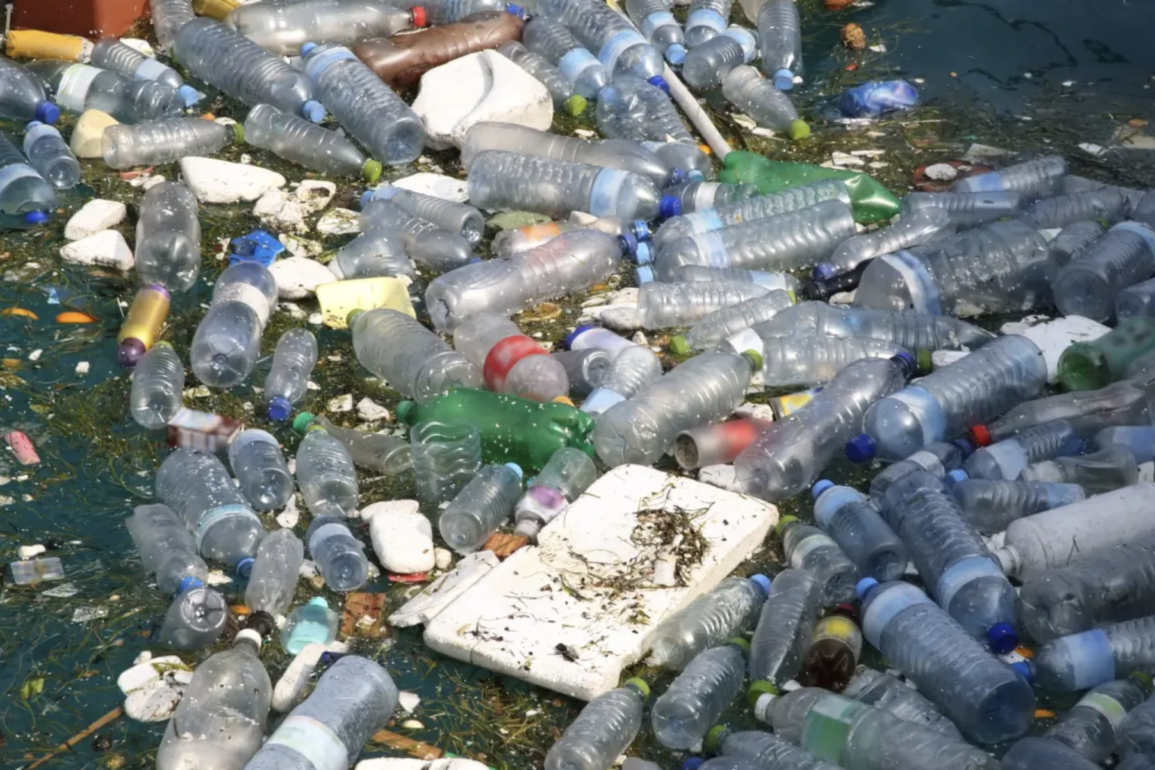In a pioneering move to combat the escalating plastic crisis plaguing the world’s oceans, The Ocean Cleanup, a nonprofit dedicated to environmental restoration, has announced a major collaboration with Amazon Web Services (AWS), Amazon’s cloud computing arm.
This partnership harnesses AWS’s cutting-edge AI and vast cloud infrastructure to accelerate The Ocean Cleanup’s ambitious goal: to clear the Great Pacific Garbage Patch (GPGP) and eliminate 90% of floating ocean plastic by 2040.
The urgency of this undertaking is underscored by recent findings from The Ocean Cleanup, which indicate that the GPGP is not only a grave threat to marine life but also impedes the ocean’s vital role in regulating the global climate. Removing this plastic debris, the two organizations said in a press statement, is crucial to safeguarding delicate marine ecosystems, preserving biodiversity, and preventing the breakdown of plastic into microplastics that infiltrate the food chain
Despite having already removed an impressive 64 million pounds of marine trash globally, The Ocean Cleanup faces an immense challenge in locating and extracting the vast, dispersed fragments of plastic that continue to contaminate the oceans.
AWS’s advanced AI-powered detection systems and robust cloud infrastructure are poised to transform this effort. By enabling precise tracking of plastic accumulation and predictive modeling of debris movement, these technologies will optimize resource management and operational efficiency, significantly enhancing The Ocean Cleanup’s capacity to detect, track, and remove ocean plastic while simultaneously protecting marine life. This collaboration is expected to uncover new avenues for deepening their joint approach to environmental challenges.
Dr. Werner Vogels, CTO of Amazon.com, emphasized the broader implications of this alliance. “Plastic pollution represents one of the most pressing environmental challenges of our time, and The Ocean Cleanup’s mission is vital for the health of our planet,” he stated. “This collaboration demonstrates how advanced cloud computing and AI can serve as powerful tools for environmental stewardship, not only transforming oceanic data into actionable insights but also creating a blueprint for how technology can address critical environmental challenges across the globe.”
Just how bad is the situation?
Every year, millions of tonnes of plastic enter the world’s oceans, creating a mounting environmental crisis that threatens marine ecosystems globally. Scientists estimate that there are now between 75 and 199 million tonnes of plastic afloat or buried in marine environments worldwide, with accumulation rates continuing to rise as global plastic production increases.
The impact of this plastic pollution on marine life is devastating. Over one million seabirds die each year after ingesting plastic debris or becoming entangled in it. Likewise, more than 100,000 marine mammals, including whales, dolphins, and seals, die annually from plastic pollution.
Sea turtles are especially hard hit, with virtually every hatchling found to have ingested plastic. Research shows that at least 267 marine species have been affected by plastic pollution, including 86% of sea turtle species, 44% of seabirds, and 43% of marine mammals.
Plastic harms marine organisms in multiple ways. Many confuse floating plastic fragments for food, which leads to malnutrition, internal injury, and toxic chemical exposure. Entanglement in discarded fishing gear or plastic bags causes injury, drowning, and reduced mobility, often resulting in death. As larger plastic debris breaks down into microplastics, these tiny particles infiltrate the marine food web with unknown long-term consequences, impacting species from plankton to apex predators, and ultimately humans.
The scale of damage is likely underreported, as many marine animals, particularly fish and smaller species, die unseen beneath the waves. Without urgent global action to curb plastic waste and improve waste management, plastic pollution in the oceans is predicted to worsen. Projections estimate that annually, between 8 and 14 million tonnes of plastic will continue entering the seas, placing marine biodiversity under tremendous pressure.
Tech to the rescue
To tackle the sheer scale and complexity of ocean plastic pollution, the collaboration between AWS and The Ocean Cleanup will focus on two critical initiatives designed to overcome current technological limitations.
The first involves developing a new AI-powered system for enhanced ocean plastic detection and tracking. This will create “hotspot hunting” capabilities for the GPGP, where plastic is unevenly dispersed “like a thin soup.” AWS will deploy a suite of technologies, including IoT, satellite, edge computing, drones, and ruggedized flotation devices, to precisely monitor plastic accumulation.
Leveraging high-performance computing for advanced data modeling, AWS will help create a “plastic navigation” system that predicts debris movement and optimizes cleanup operations. This solution will integrate data from multiple sources, allowing ships to be directed to optimal collection areas based on near real-time measurements.
The second initiative focuses on implementing a cloud-based infrastructure for marine life protection. AWS will help The Ocean Cleanup refine its marine life detection systems using new AI-driven technologies. This automated capability will reduce the need for Protected Species Observers—individuals who currently provide continuous, 24-hour cleanup monitoring. This not only cuts costs but also redirects more resources directly to plastic extraction efforts.
Boyan Slat, CEO and Founder of The Ocean Cleanup, highlighted the organization’s long-standing commitment to innovation. “Innovation and cutting-edge technology have always been at the heart of our approach to achieve our mission to rid the world’s ocean of plastic,” he said. Slat expressed optimism about the partnership’s potential, adding, “Our collaboration with AWS has the potential to deliver significant advancement in our capabilities. With AWS’s technology, we can then better locate plastic hotspots, optimize our cleanup operations, and ensure we’re protecting marine ecosystems while removing harmful plastic debris to achieve our ultimate goal of a 90 per cent reduction in global ocean plastic pollution”
This technological breakthrough offers a vital beacon of hope for restoring fragile ocean ecosystems and combating a threat once deemed too vast to manage. As the clock ticks toward irreversible damage, this fusion of innovation and urgency marks a crucial turning point in the fight to reclaim the health and vibrancy of the global blue economy.




